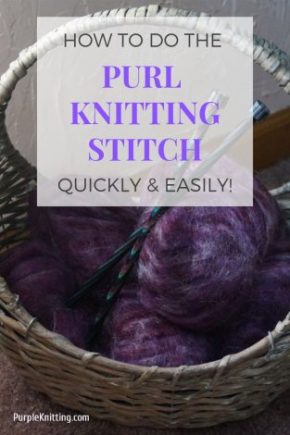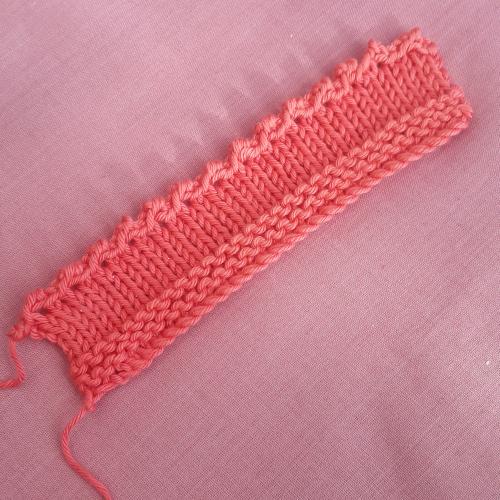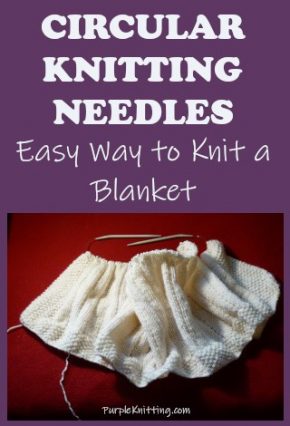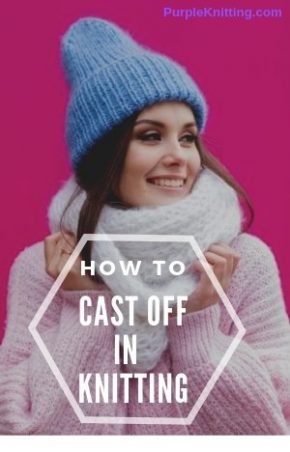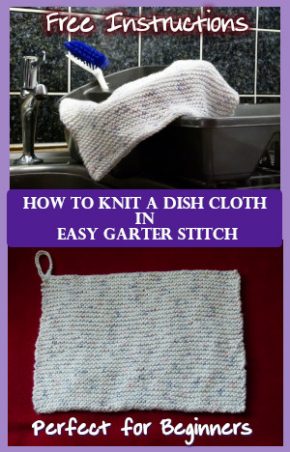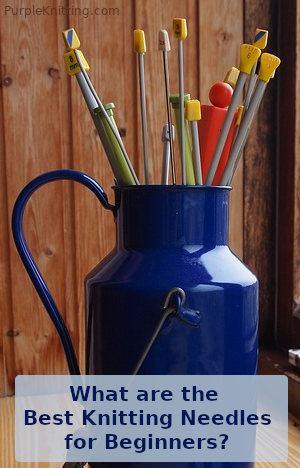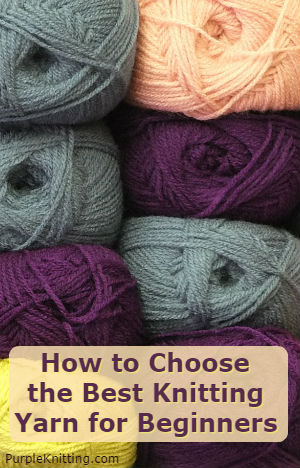
Are you confused about what is the best knitting yarn for beginners to use when first starting out learning to knit?
Contents
Just for Practice
When you’re learning to knit and just want to practice first, then selecting the right type of yarn to do this will make a big difference.
If you are just practising then the best yarn to use would be a thicker weight such as chunky and a pair of 6mm knitting needles.
Knitting a Project
However, if you want to create something as you learn, then make sure you choose a pattern that is suitable for beginners. In that case, the pattern will tell you which type of yarn (and needles) to use.
When making your selection you need to understand a bit more about the features of yarn.
Strictly we need to use the word ‘yarn’ and not wool. The word yarn covers all kinds of knitting fibres which includes ones like wool but also the man-made acrylic types and all the combinations in between.
Here’s a video from Studio Knit that discusses yarns and which ones to choose:
From the beginner’s perspective, here are some features you need to consider when choosing a yarn.
Raw material it is made from
Yarns can be made from a large variety of raw materials. These could be from animal, vegetable or man-made materials.
The most common animal fibres are wool, angora, mohair, llama and alpaca.
Plant fibres are also used to make yarns. Examples of these would be cotton, linen, bamboo and hemp.
A large variety of yarns are man-made. An example of this type is the acrylic yarns which can be 100% acrylic or mixed with other natural fibers. The label will tell you exactly what it’s made from.
If you suffer from an allergy then you will need to be extra careful when choosing your yarn. Wool can cause problems due to the lanolin content Fortunately, there is a large choice of 100% acrylic yarn that knits up well.
Acrylic yarns are a good choice for beginners
A sensible choice for a new knitter would be to go for acrylic yarn as they are mostly cheaper than the other plant or animal-derived ones. When you are just learning you want something to play with without the worry of the cost of it.
Yarn Thickness
The thickness of yarn is described by its ‘PLY’. Broadly, this means the weight of the fibre.
As a beginner, it is best to choose a medium to thick ply.
Why you might ask? Well, that is because the stitches you form will be easier to see. Also, the thickness of yarn you use dictates what size needles you need. Thicker yarn means you need to use thicker needles. Those new to the hobby will find it far easier to work with medium to thick yarn and needles.
Colour Choice
Lighter colours are easier for a beginner to knit with as it’s easy to see the work you are doing. Dark colours tend to hide what is going on with the stitches. Don’t use a darker yarn if you are knitting at night. It is frustrating as you try to see what you are doing.
Elasticity or Give
A yarn that has more ‘give or stretch’ is much easier to use when you are first learning how to do all the stitches.
Wool and acrylic yarns have more stretch than those made from cotton. When I first started knitting with 100 % cotton for dishcloths I found that it was quite easy to split the yarn. With practice and a slower speed I soon got the hang of it.
Texture
Choose a smooth, simple spun fibre as you are less likely to have issues from splitting it. There is nothing more frustrating than having to stop your progress now and again to sort out split stitches. Even though those fluffy yarns look so appealing, try to avoid them til you have mastered the basic stitches.
Shape
Yarns come in three main shapes. Skeins, balls and hanks.
A hank of yarn is usually twisted or coiled and requires rewinding which is just another step that someone new to the hobby does not need – so go for a skein or ball.
A skein is longer and more narrow than a ball. It’s wound in such a way that the fiber is taken from the centre of the skein. This means that it is less likely to roll around as you use it.
Balls, as the name suggests are rounder, and the wool is wound off from the outside. They tend to move around while you work with them. To overcome this problem though, what I do is put them in a bag. Then I put an elastic band around the top of the bag to close it down leaving only room for the yarn to come through. It keeps the ball clean too!
My Yarn Recommendations for a Beginner
Double knitting, chunky or super chunky yarns are a good choice when you are learning and just practising.
Learning to knit will be a whole lot easier when you choose the right yarn and needles. Follow the recommendations in this post –
- thicker ply – ie DK, chunky or super chunky
- lighter colours
- skein or balls
- smoother simple fibres
- yarns with more give, acrylic or wool but not cotton
- consider any allergies you may have – eg to wool based product
Armed with this information, it’s time to make a choice and get knitting!
